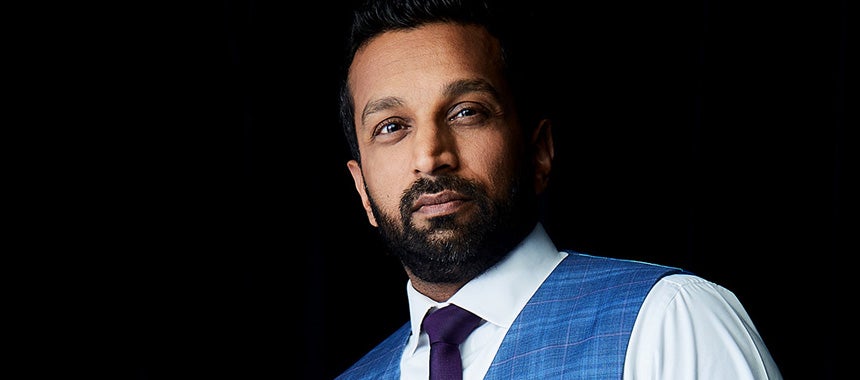Calls Pour In on the Truth About Tornadoes
13 Dec 2021
BUCK: Tom in St. Paul, Minnesota.
CALLER: I just wanted to state the fact that the strongest tornadoes — the EF3s to EF5s — have gone down considerably since the 1950s across the United States. From 1954 to 1985, we were averaging 56 of them a year, and today we’re averaging about just over 30 per year. So, the strongest tornadoes are going down greatly, and that’s because — kind of indirectly here, it’s probably or perhaps because — we have warmed a bit, and with the lack of contrast of temperatures from north to south across the Northern Hemisphere, that tends to weaken storms.
CLAY: Are you a meteorologist?
CALLER: I am. I am. Yes, I am.
CLAY: That’s fantastic. Thank you for calling in and giving us that data. Buck, nearly a 50% decline in the severity of tornado issues.
BUCK: Amazing.
BREAK TRANSCRIPT
CLAY: You can go to RedCross.org. That’s the simplest way to make donations for all of the tornado victims — RedCross.org — super simply, super easy. You can target your donation towards many people all over the mid-state, mid-South, Kentucky, Tennessee, Mississippi, Alabama, Illinois and others that had significant issues over the course of the weekend.
 But I believe we have a storm chaser online here, Buck, who wants to talk — and, by the way, great call we just had as we went to break that since the 1950s the number of strong tornadoes, EF3, 4, and 5 he said has declined from an average of 56 a year down to 30, and the overall number of deaths from tornadoes has declined as well. Let’s go to that storm chaser.
But I believe we have a storm chaser online here, Buck, who wants to talk — and, by the way, great call we just had as we went to break that since the 1950s the number of strong tornadoes, EF3, 4, and 5 he said has declined from an average of 56 a year down to 30, and the overall number of deaths from tornadoes has declined as well. Let’s go to that storm chaser.
BUCK: We got storm chaser Scott in Norman, Oklahoma. Scott, how you doing?
CALLER: Hey, guys, how are you?
BUCK: How long you been chasing storms, man? That sounds like the movie Twister.
CALLER: Yeah, I’ve been chasing for about 20 years now. I happened to unfortunately see the destruction from the Joplin, Missouri, tornado — and the 2013 Moore, Oklahoma, tornado here — so I’ve seen quite a bit of destruction, unfortunately, throughout my chasing career.
CLAY: So when you’re chasing… Just to contextualize for everybody out there, when you see the tornado, how does chasing a tornado differ in daylight versus night, and what are you trying to do as a storm chaser? How close to this storm do you guys typically get?
CALLER: Well, chasing during the daytime, obviously, is gonna be easier ’cause you can see it. You’re not relying lighting flashes or powerline arcs or surges when the tornado is hitting power lines to see the tornado, and unfortunately at nighttime, that’s the only way you can really see the tornado coming. And one of the goals as a storm chaser is to report to the National Weather Service. They’re the ones that are issuing all those warnings and getting the warning out there and so we do our best to try to get those reports, to confirm what we’re seeing out in the field so that the weather service can better warn the storms and more accurately warn the storms.
CLAY: So is the data correct based on your knowledge that the number of severe tornadoes has declined as we have moved into the 2020s — the number E3, 4, and 5s? What the meteorologist just called in and told us, does that confirm with what your understanding of the data would be?
CALLER: Yes — and especially in the past 10 years, severe tornadoes actually declined that I’ve noticed. We haven’t had a tornado outbreak up until a couple days ago and in several — I’d say about five — years, we haven’t had a major outbreak. And technically, this wasn’t even technically a tornado outbreak where you had a family of tornadoes. There was only one storm that went over 250 miles that was producing either a family of tornadoes or one single tornado on the ground.
 CLAY: So when you say…? I’m fascinated by this. When you say “a series of tornadoes,” you’re talking about different tornadoes that are erupting in different states that are from different storm systems, which differs from this one — based on what I’ve read — because this was one massive tornado that went over 200 miles and wreaked havoc across multiple states. What you’re talking about is a series of different tornadoes that are being sprouted out of the same storm system. Am I right about that?
CLAY: So when you say…? I’m fascinated by this. When you say “a series of tornadoes,” you’re talking about different tornadoes that are erupting in different states that are from different storm systems, which differs from this one — based on what I’ve read — because this was one massive tornado that went over 200 miles and wreaked havoc across multiple states. What you’re talking about is a series of different tornadoes that are being sprouted out of the same storm system. Am I right about that?
CALLER: That is correct. Now, I want to go back and say that there was another tornadic storm in Illinois, and I’m not talking about that one. That was a separate storm. The one I’m talking about went from Arkansas — actually started in Little Rock as just a regular thunderstorm — and moved across into the bootheel of Missouri and continued on into Kentucky. And by the time it got to about Jonesboro, Arkansas, is when it really started to put down a very large tornado that we witnessed and reported in. So that storm kept going just continuously and —
BUCK: So, Scott, I know initially you called in ’cause you want to talk to us about how it’s really structures that make a huge different here in terms of the engineering of the structures that people are in/live in during a tornado. Can you go into some about how that makes the big difference here?
CALLER: Right. Yeah. So your structures. Tornadoes reveal how strong a structure and how well that the structure is built, and so it doesn’t matter how strong or weak the tornado was. If it destroys a building, more than likely.. If it flattens it, more than likely that building wasn’t built very well and these days a lot of buildings, the codes are a lot better now than they were back then so people are slightly safer.
Now, I do know in Kentucky, there is over 60 deaths at that candle factory there in Mayfield, Kentucky. So in a building like that, there’s nothing you can. You can’t really take shelter anywhere in that large warehouse. It’s just not built to withstand violent tornadoes. So I’m sure the media is talking about how the deaths are going up from more violent tornadoes, but that’s just not the fact. You know, these are just freak events where the tornados just happen to hit towns that haven’t been hit in a long time and those structures aren’t up to code, and the tornado will reveal that.
BUCK: Scott, thanks for calling in from Norman, Oklahoma, storm chaser. Grant in Outer Banks, North Carolina, an environmental engineer. Look at the audience we have here, Clay.
CLAY: Fantastic.
BUCK: It’s amazing the people we got listening. Go ahead.
 CALLER: Hey, guys. Dittos to you and dittos to Rush in heaven.
CALLER: Hey, guys. Dittos to you and dittos to Rush in heaven.
BUCK: Mega dittos, sir. Thank you.
CALLER: Yeah. This is like 25 years. First time I ever called in. But, yeah, you know, my liberal friends, they hyperventilate about this global warming, and it just gets so nauseating. I just kind of remind them, “Look, we don’t have enough data on this earth to extrapolate out and say that the earth is burning up, that the earth is warming in some dismal trend. We know that the earth has cycles — you know, it’s a sine wave — and we’ve had cooling periods and we’ve had warming periods, you know?”
Most of those, by the way, were probably set off by major cataclysmic events, like a series of steroids or a giant volcano erupting like Yellowstone. The whole damn state blew up. But, yeah, think about it. Mount St. Helens put more CO2 in the area than the United States probably produces in 20 years in one event, you know? So if the earth is 26 billion ideas or 40 billion or however old it is, we’re looking at data from like, what, the last 300 years, a couple hundred years of recorded data? And even if we use geological data and go back 5,000 years, you’re still looking at such a sliver of information. It’s impossible to say that, yeah, we’re having in global warming.
BUCK: I don’t know. Al Gore, he said something a long time ago, and people like Al Gore for some reason. (laughing) Man, it’s all so crazy, man. Thanks for calling in.
Recent Stories

FBI Director Kash Patel: We'll Find Pedophiles, Fentanyl, and Epstein Enablers Wherever They Are
When the press is going after the director's girlfriend, Alexis Wilkins, you know he's over the target.

Buck Discusses the National Guard Shooting in Real Time
We will see what role the left's rhetoric against President Trump's deployment played in this.

Thanksgiving Picks & Predictions! Who Wins the Turkey Day Showdown?
Cowboys, Chiefs, Longhorns, and Aggies. It's a weekend for the gridiron!

Miranda Devine With More News You Won't Hear Anywhere Else
Soft-on-crime judges. Illegals. Trump Year 2. The Pod Force One host and NY Post columnist has it all covered.






